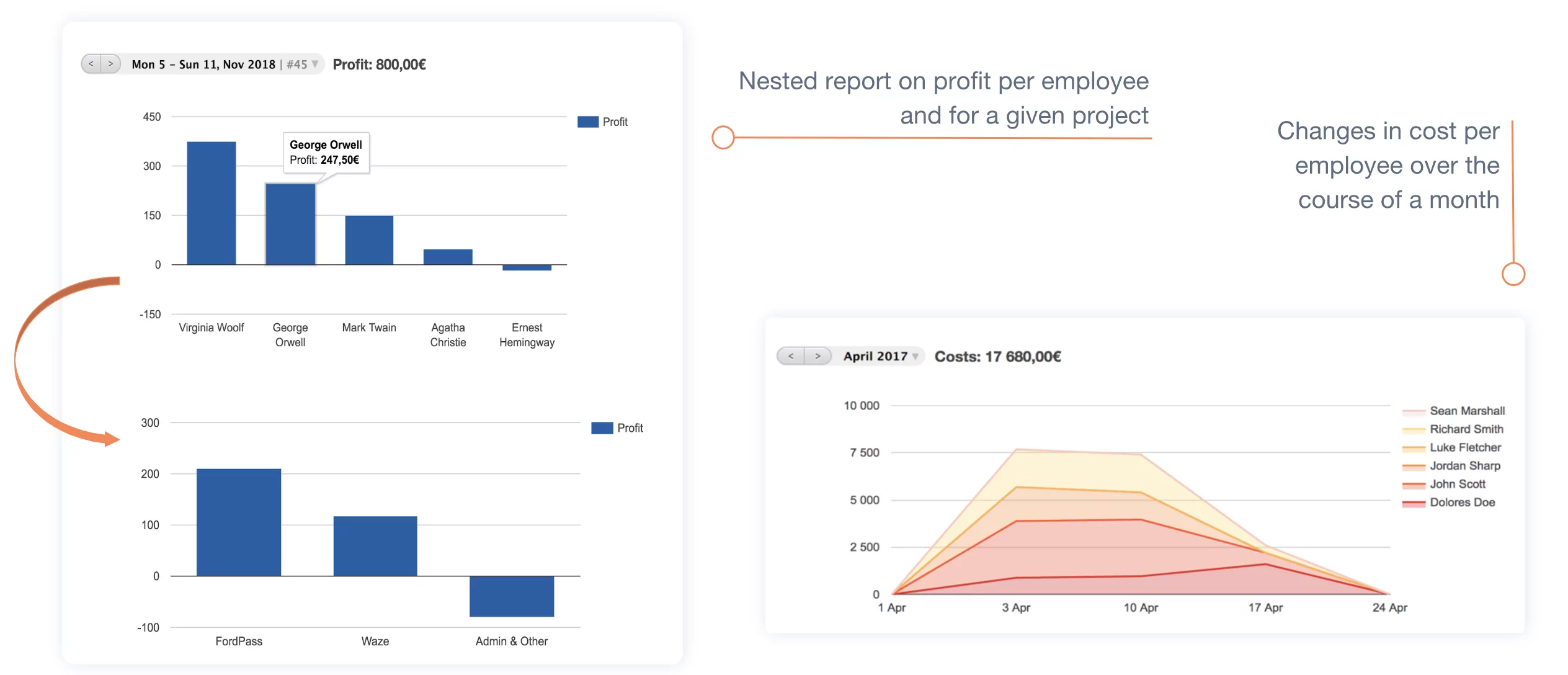How internal employee transfers will motivate your team but challenge your managers


How do you keep employees motivated and engaged in the workplace? There are several strategies, one of which is talent mobility. Generally speaking, talent mobility is the practice of using internal talent to fill positions within your company. However, talent mobility goes far beyond that. “Unlike succession, which is typically a top-down approach, talent mobility takes into account the interests and aspirations of employees,” affirms Ben Eubanks, Principal Analyst at Lighthouse Research and Advisory.
With that in mind, talent mobility isn’t only an effective way to tackle disengagement, but also a useful tool to empower employees. Below we’ll explore the benefits and challenges offered by internal employee transfers, and look at a few cases that show how to effectively encourage talent mobility at work.
Encouraging employees to develop new skills that fit their interests is an excellent strategy to boost your company’s productivity. “Whether you are promoting an existing employee or coordinating their lateral move — internal role transfers are a powerful way to build up your talent pipeline, drive engagement and reduce turnovers,” argues Jeni Fahy, a contributing author at Sapling. According to Gallup, employees with opportunities for continuous development are twice as likely to remain at their current company.
Similarly, Daniel Sonsino, Vice President of talent management at Polycom, adds that “Hiring internally also increases engagement. And folks tend to refer to others more frequently when their own career has grown within the organization.” Keeping employees engaged is the best thing you can do to boost productivity!
Familiarity with the company’s corporate culture and overall environment is one of the most important aspects of internal hiring. “When you promote people internally, one of the biggest advantages is that they already know how to work in the environment,” says Roger Ahfeld, Vice President of Tedeschi Food Shops. In fact, this trait affects both internal and external hiring. According to Ahfeld, “cultural fit is the most important factor when you are considering hiring somebody externally.”
Larry Nash, Head of Recruiting at EY, also highlights the role that cultural fit plays in his company’s hiring process. Internal candidates “have a strong knowledge of our culture, processes and methodologies, and have many relations throughout the organization,” says Nash.
Furthermore, Daniel Sonsino states that internal hires not only retain organizational knowledge, but also progress faster than external hires in their new roles. This is important when it comes to measuring the success of internal vs. external hiring. In fact, recent research has concluded that “between 40% and 60% of external hires aren’t successful, compared to only 25% of internal hires.”
Apart from the cultural fit, internal hires are cheaper than external hires. According to research by Professor Matthew Bidwell from the University of Pennsylvania, investment banking companies pay 18% to 20% more for external hires than for people moving internally. Likewise, the Saratoga Institute has concluded that “the average cost of finding and hiring someone from outside the company is 1.7 times more than internal hiring.”
Considering all of the above, internal hiring has become a well-established pillar of the recruiting process. In fact, a recent survey carried out by LinkedIn reported that 28% of new hires are internal. Along those lines, Laura Handric, a staff writer at Fit Small Business, says that 30% is the average proportion of internal hires in top companies. However, she also says that this percentage maybe higher for international companies. “Many international companies target an even higher internal recruitment goal — as much as 55% or more,” Laura points out.
Internal hiring helps with employee engagement, productivity and smooth transitions while saving your company money in the process. However, the following are some challenges that managers may face when hiring internally.
With an internal hire, you could stymie the flow of fresh ideas to your team. As noted by award-winning writer Lisa McQuerrey, internal recruitment can open the door to stagnation. “If everyone operates on the policy of ‘That’s the way we’ve always done things,’ you run the risk of maintaining a status quo that doesn’t allow for new ideas or direction. This can put you at a competitive disadvantage,” argues McQuerrey.
Internal hiring is a good way to optimize the recruitment process. However, a limited search can hurt the odds of finding a better fit for the role you want to fill.
Unless you have a solid talent mobility policy in place, sometimes an internal hire can provoke tension among employees. As Lisa McQuerrey states, “if you run a small operation and promote one person over another, it can create discord in the workplace that affects everyone.”
Some of the most successful companies use both internal and external hiring as part of their recruiting strategy. Considering only internal candidates may be counterproductive, especially if there are good reasons to bring in someone from outside. According to business writer Eric Krell, hiring externally is probably a better option in the following circumstances:
Many managers are either unaware of or unprepared for the logistical obstacles that an internal employee transfer can cause. This can significantly hinder the internal recruiting process, and it’s therefore important that your talent mobility policy address any potential turmoil. For example, if you have assigned individual milestones for a particular project, you may need to revisit them.
These hurdles can be minimized if your company has the right technology in place. Beebole’s group ‘timeframes’ feature lets managers easily move an employee from one department to another, while maintaining a record of previously tracked hours and costs in the correct team. The feature is key if you are tracking employee costs and need to maintain accurate, quality data during internal changes. This is just one example of numerous tools that can help make internal employee transfers more seamless.

There are many examples of companies doing innovative things when it comes to talent mobility. Let’s take a look at some of the cases from a study published by TalentGuard and Lighthouse Research & Advisory.
In the past, this well-known financial company experienced problems hiring and retaining employees. To tackle the problem the company implemented the Internals First program. The goal of the initiative was to improve recruiting, retain talented employees, and lower the costs of training and turnover. To achieve this, they changed their corporate culture by actively promoting growth within the company.
Not only did internal referrals became the norm, but managers also started to “encourage workers to seek other opportunities to leverage their skills and create a rich, diverse career path.” The beneficial results for Credit Suisse were clear. In 2016, almost 50% of director roles were filled internally, while nearly 10% of employees made an internal transfer. Thanks to these achievements, the company has saved nearly $75 million since it implemented the program.
A giant in the healthcare field, Cardinal Health introduced various initiatives aimed at promoting development among its more than 30,000 employees. The company leveraged the strengths of its employees and allowed them to find “their own internal career path to success.” The impact of this approach was evident when Cardinal Health and CVS Health formed a new company. Thanks to Cardinal’s strategy, there was extensive data regarding the competencies and interests of employees. This allowed the company “to quickly find the right (people) for the opportunity, creating a powerful moment of engagement and filling critical roles for the firm at the same time.”
Hootsuite has one of the most innovative models in the market: the try out model. The program lets employees try out a new department one day per week, for a period of three months. In doing so, Hootsuite helps its employees to stretch their networks in the workplace and improve their skills. Rather than simply leveling up, the company encourages its employees to expand into new skills and territories.
As Ben Eubanks explains, one of the most interesting things about Hootsuite’s approach is that it requires managers to implement a learning plan. The manager who ‘lends’ an employee determines what kinds of skills that employee should be learning, in order to later bring their newfound knowledge back to the team. Likewise, the manager who ‘receives’ an employee creates a plan that integrates what they will learn, and the existing skills they bring to their ‘adoptive’ team. Employees who excel in the experience end up providing a lot of value to both teams.
Every year, millions of people move internally within their organizations under different circumstances. For Henry Sanchez, an experienced IT analyst at a well-known insurance company in the Midwest, changing roles within his company wasn’t necessarily smooth. “It wasn’t easy. I interviewed 3 times before I got another role,” recalls Henry when asked about his experience.
In spite of that, Henry was able to make his move by taking advantage of resources within his company (e.g. a career coach, internal job posting site, and on site classes for career development).
“Internal mobility is not encouraged, but there are resources available that allow us to advance our career. Basically, you need to work hard for a good change or promotion. Nobody else is going to do it for you”.
Being able to move wasn’t the only challenge that Henry faced. Once he changed roles, even if it was within the same department, he essentially had to start fresh. “Within IT, I changed from being a developer to the infrastructure side. There were a lot of new things to learn. It felt like moving to a different company, where you have to learn a new sub-culture,” states Henry.
Apart from those initial challenges, Henry highlights the positive impact that changing roles had on his professional life. “It had a very positive impact on my professional life. It broadened my skills, gave me more confidence to try other roles, and sharpened my interview skills,” he explains.
Henry believes companies should encourage internal employee transfers not only for their own good, but to align themselves with the current workforce. “In today’s economy we need to have a workforce that adapts to change faster than competitors. We cannot be in isolated silos,” he concludes.
As you can see, the benefits associated with internal employee transfers are enormous. Moreover, disruption from those transfers is minimal when you encourage talent mobility across an organization. “If managers want to lessen the impact of an internal transfer, they should be open with their teams about jobs within the company, and also be open to hearing the career aspirations from their staff. By keeping the lines of communication open, managers are less likely to be surprised by a sudden change than by someone leaving without notice,” argues Ben Eubanks.
Remember that keeping your employees happy is the best way to run a successful business. Be smart when hiring, but don’t miss out on the benefits obtained when you encourage internal employee transfers!
What is Excel Power Query? Using Power Query in Microsoft Excel opens up the possibility of unlocking invaluable Business Intelligence for managers, which is exactly what we’re going to cover today. But first thing’s first: What is Power Query and where can you access it? You can access Power Query on the Data tab of […]
When it comes to annual salary and compensation, there can be a bit of confusion. What do these words encompass, how are they defined, and what’s legally required from an employer’s perspective? Those are just some of the most frequently asked questions when it comes to annual compensation, which is why we’re tackling them—along with […]
“Almost everything that can go wrong in a business has a human capital component.” David Creelman (CEO of Creelman Research). While most companies might agree, very few are prepared to manage human capital risks. Is yours one of them? Regardless of how automated or technology-focused the current workplace is, the most valuable asset for any […]